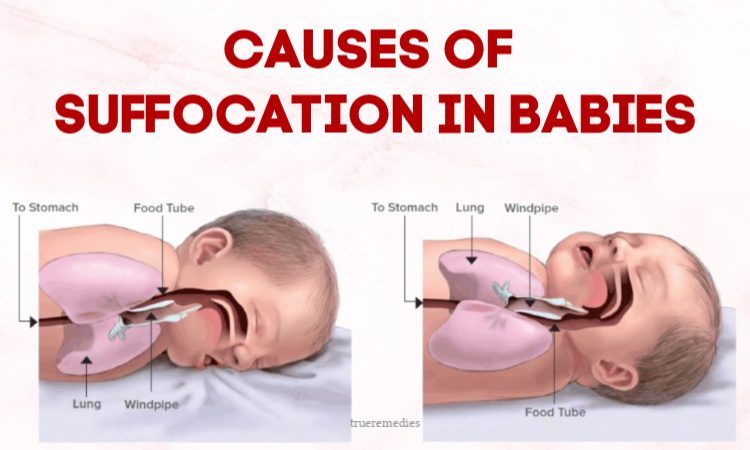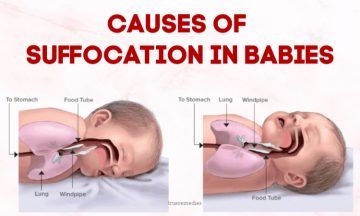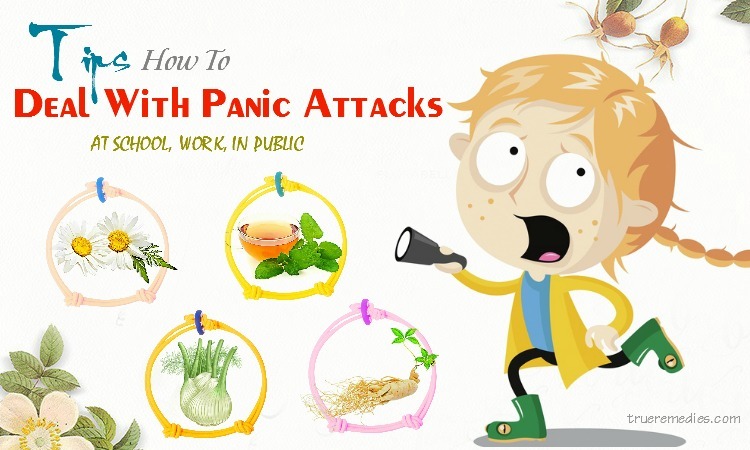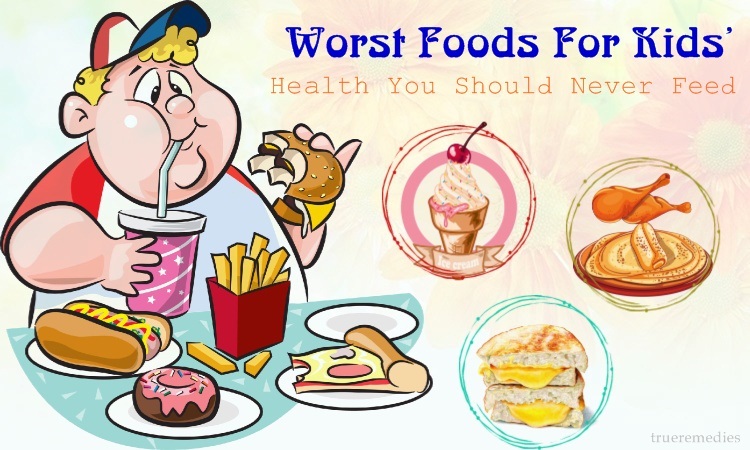Table Of Contents
Airway obstruction injury or suffocation is one of the leading causes of unintentional death in infants and young children[1]. This injury can be caused by many things that are lurking around your home. Things that threaten our kid’s life when we are not there. Things that are always here, but we may not notice. So what are these things? If you love your child, do not hesitate to take a peek here. TrueRemedies will go over the common causes of suffocation in babies and help you prevent them.
- 13 Natural Remedies To Treat Dry Nose
- 17 Useful Ways To Treat Diaper Rash In Babies
- Top 21 Unsafe Foods That Babies Can’t Eat (This article was medically reviewed/fact checked by Dr. Annie Markowitz)
Top 5 Causes Of Suffocation In Babies And How To Prevent It
1. Suffocate From Drowning
Drowning is one of the high-risk causes of suffocation in babies, especially in the ones under three years of age. Most parents think drowning occurs only in swimming pools, lakes, rivers or the sea. However, even when children are at home, there are unexpected risks of drowning related to water access: bathtubs, spas and hot tubs, and even standing water at home. About 79% of all drowning cases happen in children under the age of four during non-swim times[2].
To reduce the risk of drowning and injuries related to water risks in children and babies, you should follow these useful tips and techniques:
- Do not let young children bathe alone. Even a bucket of water or the basil at the low water level can still steal your child’s life, especially if your kids are under three years old.
- For children under five years old, always keep an eye on them when they are bathing. It is recommended preparing all the things you needed and placing these things in where you can easily reach for using. It is because findings items during the bathing time will lose your concentration and attention. As a result, your kids are likely to fall over or be in danger. When your child can bathe alone, teach them the safety tips.
- Empty water bath, basin and tub immediately after using
- Place one or two anti-skid footpads in the bathroom to prevent children from slipping or falling into water containers like bathtubs or bucket.
- Block access to the bathroom when it is not in use. Because children like playing with water, they will go to the bathroom when their parents are not there.
- Build a fence on all sides with at least 4 feet height and 4 inches of width around the swimming pools
- Pay undivided attention to your toddlers when you take them near and around water. Swim with your child and get out with her or him even if lifeguards are nearby.
2. Asphyxiation From Smoke And Gas
Suffocation also happens when children inhale carbon monoxide (CO) or other toxic gases. CO is life-threatening poisonous gas that can’t be smelled, tasted or seen.
Children under four years old and unborn babies are at a high risk of this severe condition because they have a weak immune system. So, that allows the CO to build up the child’s body, replace oxygen in their blood, and damage the child’s brain, tissues and organs. The worse thing is that severe condition of poisoning can lead to permanent injury or even death.
To prevent asphyxiation from breathing in CO and gas in babies and young children, you should follow these useful tips and techniques:
TrueRemedies Partner Solutions

Need a Help from the Leading Expert Online, Available 24/7?
They’re all here and ready to answer your questions online or by phone. Keep asking questions until you get the answer you need.
- Understand the sources of CO. This gas can be found in smoke from a fire, gas-powered vehicles, tools or machines, water heater, furnace, wood-burning stove, gas stove or fireplace, and exhaust from motorbikes, cars, and other vehicles. It is also present in devices which are not vented like stoves, propane heaters, lanterns, grills[3].
- Install a good CO detector in your home. You need to teach your children how to use and read this detector. They need to know when it is dangerous to get out of the house and find help.
- Regularly check your furnace, chimney or wood stoves. The ideal time is every year before you want to use them. Furthermore, do not forget to clean the fireplace if needed.
- Always keep an eye on gas appliances, especially when you have a child. Avoid using heaters or barbecues that burn fuel in closed spaces. Ensure the gas appliances are well vented and hooded.
- Do not let your child go around anyone who smokes
- Turn off all equipment like heater, gas stove or oven after using
- Do not let your child sleep alone in the car.
3. Suffocation From Choking Something
Swallowing a hard object that can not go down in the airway obstruction can lead to choking and suffocation. Babies and young children who are always curious about anything often put something around into their mouth.
Here are some precautions you should keep in mind:
- Be careful when feeding your child foods that are likely to cause choking, such as meat, candy, nuts or fruits. It is recommended cutting or grinding these foods into pieces to avoid choking.
- Keep small things out of children’s hands. You can put these things into a box with lids for storage.
- Ask your child not to joke or laugh while eating because too much food going to the throat can lead to suffocation. If your infants are still breastfed, do not feed them when they are sleeping.
- Let the infant breastfeed slowly.
- Always keep the button cell batteries out of reach the children because it not only makes your child choke but also threatens the baby’s life in less than 2 hours due to the dangerous substances in these batteries. Dissolve batteries properly after using.
4. Suffocation From Nasal Blockage
In some cases, nasal blockage is one of the causes of suffocation in babies. That is more common in infants than older children because their instinctive reflex is not developed well.
Here are several ways that help you prevent this cause of airway obstruction injury.
- Do not let your child sleep on his or her back or lie with face downwards on towels, mattresses or pillows. Do not put too many toys or pillows on your baby’s bed because it can cause suffocation while your child is sleeping.
- Make sure the size of the mattress fit the size of the baby’s crib or bed. The narrow gap may make the baby’s head get stuck, causing a lack of air.
- Lay the bedspread securely over the crib; so it isn’t loose to squeeze the baby’s head or neck.
- If you want to use a towel to cover the baby’s face when taking him or her out, choose the breathable and thick one to avoid breathing problems.
- Do not let young children under the age of three sleep with parents or siblings because it can increase the risk of suffocation, strangulation or sudden infant death syndrome (SIDS). During sleep, there is a chance of people putting their arm over baby’s nose or abdomen. You can let your child sleep in his or her crib or cot in your room[4].
5. Suffocation From Squeezing The Neck
Ropes or lines that are entangled or wrapped around the baby’s neck can steal the child’s life in a few minutes. It is too fast for you to stop. Therefore, to prevent this one of the common causes of suffocation in babies and ensure the safety of children, do these things:
- Check all rooms in the house to make sure that there are not any dangerous curtain cords or lines. Be careful with electrical wires and any lines on the floor because it could squeeze the baby’s neck and cause the danger. Furthermore, instead of using long hanging curtain cords, you should buy the shorter or twisted ones to prevent the risk.
- Do not place sofas, high chairs, tables, or bookshelves near the window curtains because children can climb on these things to look out for in the winter. As a result, they can slip over the winter, and the cords will entangle their neck.
- Do not let children wear silver or gold jewellery that is too tight or too loose around their neck. It is because the tight chain may cause discomfort while the loose one can get entangled with other objects and strangle your baby.
Choking or suffocation can lead to death in infants and young children. Therefore, during parenting periods, parents should always keep an eye on their child. Following these above tips and techniques on our article can help reduce the risks. We hope that you love our writing on common causes of suffocation and prevention. Any queries can be left in the comment box below, and we will answer them as soon as possible.









